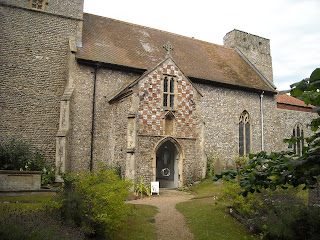As I walked through the graveyard it was a very pleasant and quiet place to be, you approach the church from a little dirty track which leads to Thursford Hall, however level with the church you find a sign, advising you to go no further as it is private property.
It is easy to tell that the church has been rebuilt over its lifetime as the current church has a very Victorian feel to it, with records suggesting that it was rebuilt in the 1860's. This would have been completed to the taste and requirements of the Chadd family who lived at Thursford hall, just south of the Church.
St Andrews church houses the Chadd family chapel in the south transept with the family pew sitting above their mausoleum. This section of the church is situated over 2 levels.
Background reading credited to Simon Knott of www.norfolkchurches.co.uk
























































